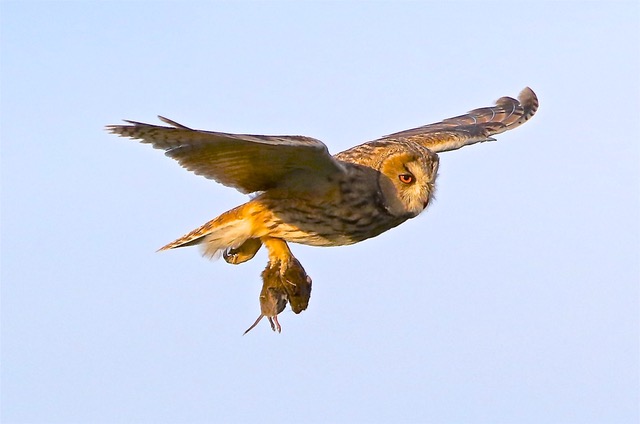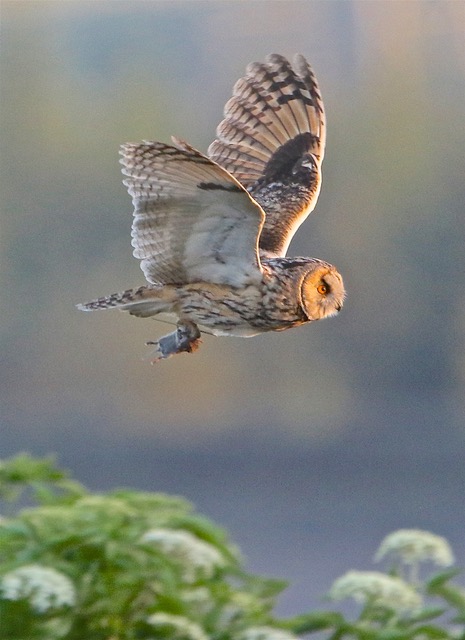
Gordon writes: Long Eared Owls are the most nocturnal of all our Owls and seldom hunt in daylight. There are only a couple of weeks, at this time of year, when the adults are forced to hunt in daylight to feed their fledged young. Last week I was privileged enough to photograph a pair of these secretive Owls in full sunshine!

[registration_form]
We used to be the most reliable site in Cumbria to see this species with even a pair nesting at the top of our drive one year. The numbers have crashed in recent years [even through a vole year] and one of the reasons is the removal of Crows by a conservation organisation! Yes the lack of nest sites now plays a part! For those who don’t know the Long eared Owl does not build its own nest but uses other birds especially Crows and Magpies. Remove these and you remove the owl not to mention Kestrel, Hobby, Tawny Owl and even Merlin. Interesting to note that tree nesting Merlins are no longer found here and with only 1 pair raising young this year with a surge of ground predators it is not surprising!
Nice images, but daylight hunting is not quite as limited as that.
Daylight hunting (by male) is common place in late winter/ early spring as pair commence cycle & nest selection (he feeds her).
A series of wet nights (especially if blustery too) can result in birds daylight hunting throughout the year.
Second broods are rare, but when they occur a pair can be observed daylight hunting for pretty much months on end.
Continental migrants (chiefly in autumn) will also work in daylight.
Information from 25 year study of up to 150 territories in Co.Durham.
(where corvid nests are lacking birds will use Wood Pigeon, squirrel drey, witches brooms etc – or nest baskets/wooden tubs)
Steve – thank you.